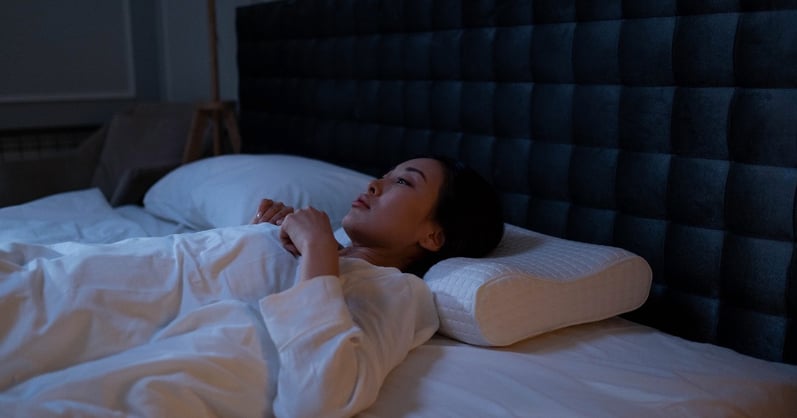COMISA: When Insomnia and Sleep Apnea Occur Together
Published on: September 21, 2023 | Reading time: 🕐 3m

COMISA is a term used to describe the co-occurrence of two common sleep disorders— chronic insomnia and sleep apnea. We’ve already described what insomnia is in “What is insomnia after all?” so let’s take a look at what sleep apnea is, along with the health risks that may occur when it is left untreated.
What is sleep apnea?
Sleep apnea is a sleep disorder in which breathing is repeatedly interrupted during sleep. These interruptions are called apneas. Although there are different types of sleep apnea, the most common type is called obstructive sleep apnea, or OSA for short.
OSA affects 5% of adults and is characterized by apneas that occur when the soft tissue in the back of the throat relaxes and blocks the airway—hence the term obstructive. When the airway is blocked, breathing may stop for 10 to 20 seconds. This can lower blood oxygen levels, causing the heart and brain to react. Generally, a person’s heart rate increases in an attempt to circulate more oxygen in the body. The brain experiences an arousal or brief awakening, allowing the airway to reopen. The awakening can be so brief that many people are not aware of it. This pattern of apneas and awakenings happens dozens or even hundreds of times per night, leading to significant sleep disruption.
OSA is associated with several signs or symptoms, with the most obvious being the stoppage of breathing during the night or loud snoring (often reported by a bed partner). Other common signs include excessive daytime sleepiness and fatigue, waking up in the middle of the night short of breath or choking, night sweats, frequent nighttime urination, dry mouth or sore throat in the morning, and waking up with chest pain or headaches. The combination of frequent apneas and arousal from sleep results in fragmented and poor-quality sleep. Understandably, and similar to those with insomnia, OSA sufferers may experience reduced quality of life, concentration and memory problems, irritability, mood swings or depression, and lost productivity at work. The risk of car accidents is increased due to poor alertness.
The link between OSA and physical health is also important to highlight. Untreated OSA has been associated with high blood pressure, cardiovascular disease, type II diabetes, strokes, and even a shortened lifespan. Obesity may be a possible pathway between OSA and these serious medical conditions. Obesity is common in OSA and also greatly increases the risk of cardiovascular disease, diabetes, and stroke. However, not everyone with OSA is obese. Other contributing factors may include anatomical features—such as a small upper airway, bone structure, large tongue, recessed chin—age-related loss of muscle tone, smoking and alcohol use, or simply sleeping position.
Diagnosis and management of OSA is essential. If left untreated, many of the effects of OSA will worsen over time, with some of them becoming irreversible.
Chronic insomnia and OSA often occur together
Although co-occurring insomnia and OSA were first recognized in two male patients in the 1970s, research on COMISA has only emerged within the past 20 years. Significant overlap between insomnia and OSA has been found, with approximately 30-50% of individuals diagnosed with one disorder experiencing symptoms of the other.
Insomnia and OSA each independently lead to significant effects on daytime functioning and mental and physical health. When they occur together, their effects may be additive. Successful treatment of these disorders is therefore essential to helping COMISA sufferers regain sound sleep, promote good health, and resolve daytime effects.
Read more: What Is Insomnia?
Need help with your sleep?
We can help you! HALEO offers a solution that can contribute to productivity and well-being through quality sleep. Schedule a discovery meeting by booking your time here.



